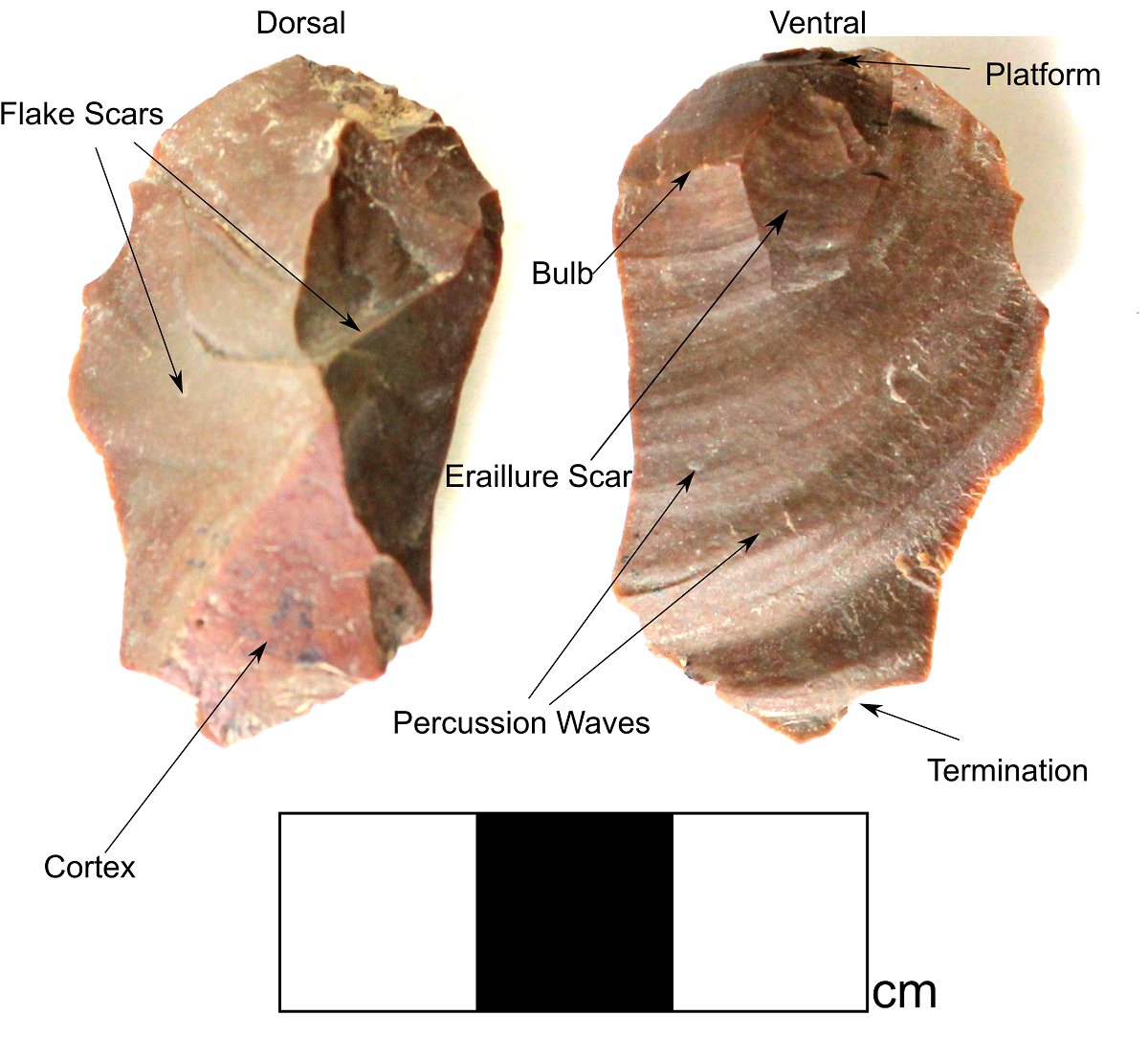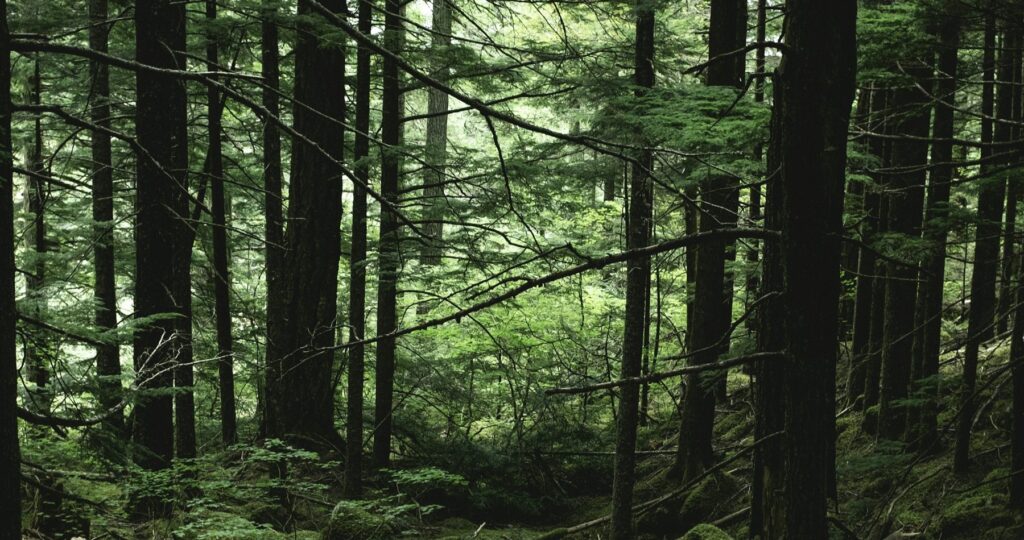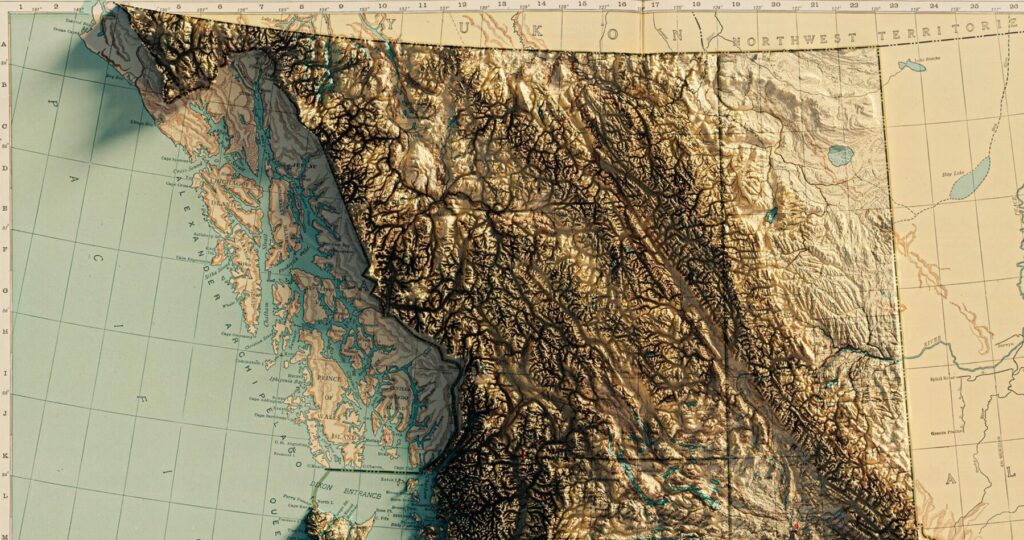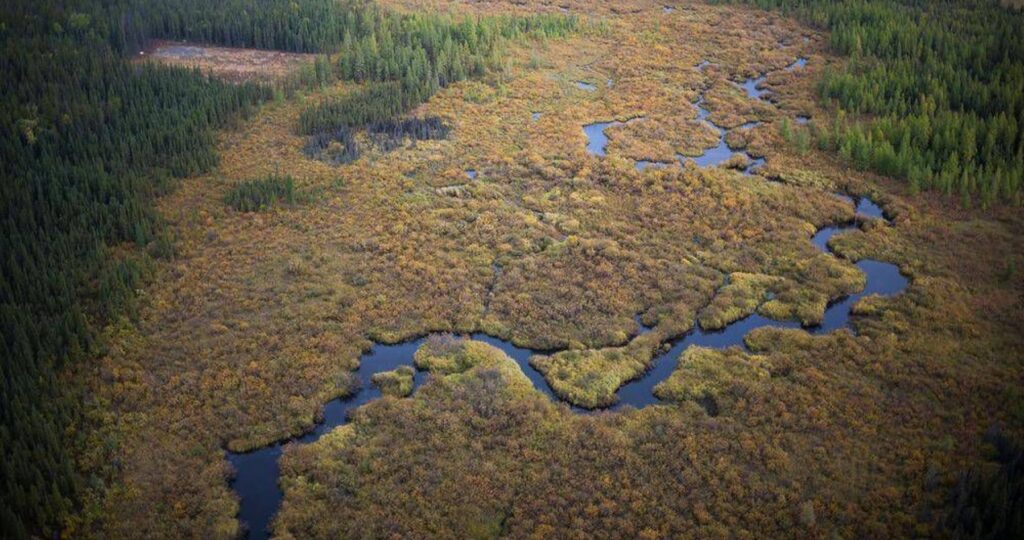Post Category : Method & Theory Special Finds
Features of a Flake
Back in 2015 I was dropped off by a helicopter in the middle of a large muskeg to assess a cutblock for Alberta-Pacific Forest Industries. After trudging my way through the swamp to the cutblock, I found a very prominent but small hill. I put my shovel in the ground and I found one large, beautiful flake. I tested out the rest of the landform but found nothing else. I flagged the site for avoidance by harvesters and made my way back through the muskeg to be picked up by the helicopter.
When I got there I told the pilot that I found a site. He responded “Really? This is the middle of nowhere. Why would anyone be out here?” To which I replied, “People were everywhere, man.” The pilot was skeptical and asked to see what I found. He said, “That’s just a rock that was broken by your shovel.” I responded by saying, “I can give you eight reasons why this is a legitimate artifact…”

The above artifact is the “textbook flake” that I found that day. It has all the features that we typically look for in determining if it is natural or a rock that was broken by a human in the past. These features are:
1. Bulb of percussion: A bulb that forms directly below where the hammerstone struck the core. This is what causes the flake to be popped from the core. If a rock is broken by heating or freeze-thaw this bulb will not be present.
2. Platform: The flat area where the flintknapper would strike the core to pop the flake off. These areas are sometimes prepped to be struck by rubbing the hammerstone on the edge to strengthen the edge and remove any micro-fractures that may cause the rock to break in an unintended way.
3. Percussion waves: Caused by the force travelling through the flake.
4. Eraillure Scar: Small flake scar on the ventral surface of the flake which is the result of the rebounding force from the percussive force.
5. Termination: This flake has a feather termination. This is a perfect detachment of a flake from a core. Desirable because the end of the flake is sharp without need to resharpen or retouch. This means that the flake is a ready tool that can be used to cut or scrape. Other types of terminations include: hinge, step, and overshot terminations. These are usually an error by the knapper or flaws in the core.
6. Flake Scars: Areas on the dorsal surface of the flake where flakes were knocked off during earlier stages of tool making process. The coincidence of these being present on a naturally broken rock are impossible.
7. Material: The material of this flake is a fine grained chert. This is not a rock that would naturally be found in this immediate area. There were also no other rocks present in the shovel test or any of the other shovel tests that were dug that day.
8. Context: Sometimes when rocks are crushed by heavy equipment they can break in a similar fashion but this was found pre-disturbance. Additionally, the force from me putting my shovel into the ground could never possibly break a rock in this fashion. I am not that strong.
It is not often that we have all of these flake features present. Sometimes if a flake is broken we might not be able to see the bulb and platform or the termination. We usually try to find at least two of these features to call something an artifact. To convince a non-archaeologist a flake is genuine you might need all these features present. I feel like I convinced the pilot that this was a real artifact but I think he only responded by saying “interesting.”



